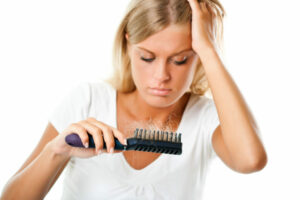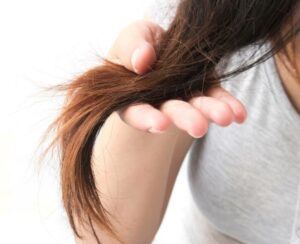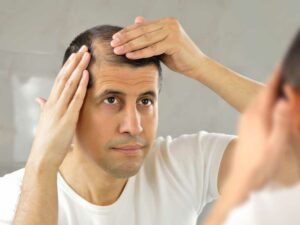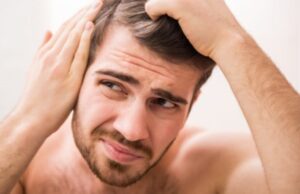The psychological impact of hair loss on women is believed to be even more profound than that suffered by males.
Trials suggest that women confront their alopecia indirectly by attempting to shroud the problem, using altered styling methods and cuts, whereas men usually respond combatively by treating the source of the problem. Women`s tendency to use ineffective coping mechanisms intensifies the impact of hair loss by producing unsatisfying results.
Alopecia`s consequences on self-esteem alone make the condition treatment worthy and there are effective, safe therapeutic options. The world of cosmetic remedies is often dotted with unsafe medications, ineffective treatments and false promises. Alopecia`s treatment options, therefore, need to be navigated with care, but there is plenty of hope to be found in contemporary medicine.
Androgonetic alopecia is the most common reason for hair loss and is typified by its thinning pattern over the center of the scalp. It is hereditary, with the genes of both parents playing a role. Female pattern hair loss usually happens late in life, but it can sometimes begin during adolescence. Shrinking follicles eventually stop growing, which results in thinning, followed by baldness. Biopsies and blood tests are performed to accurately diagnose the condition. While some women use Finasteride as a treatment, this option is only FDA approved for male pattern baldness because of the risks it presents to unborn children. Nevertheless, studies have been conducted demonstrating the drug`s efficiency in treating female pattern baldness.
Minoxodil remains the only effective and safe way to stimulate hair growth and slow down balding in women. This topical cream usually demands between four and 12 months of treatment. Randomized, controlled trials have demonstrated Minoxidil`s moderate efficacy for female patients. Certain contraceptive tablets containing estradiol and cyproterone are also frequently prescribed to block the effects of male hormones and, in so doing, reverse female pattern baldness.
Hair loss needs to be treated according to its cause and hypothyroidism is sometimes the culprit. Those with thyroid problems will have coexisting conditions such as:
- Weight changes
- Depression
- Reduced concentration
- Fatigue
A simple blood test is done to diagnose hypothyroidism and if a positive result is found, hormone treatments are used to stabilize levels. Treating this oft-overlooked condition softens the hair to prevent breakage. Patients with this disorder generally suffer from brittle hair and total baldness is rare.
Iron deficiency anemia is a common complaint that can induce alopecia. A lack of oxygen-rich red blood cells is responsible for hair loss, but the condition is easily treated with iron supplements and dietary changes. An increase in iron-rich superfoods such as clams, tofu and soybeans is effective when combined with foods that enhance absorption. Broccoli, strawberries and white wine are rich in the heme iron that improves the body`s absorption of non-heme, iron-rich foods.
Polycystic ovarian syndrome is a common hair loss trigger, which has the opposite effect on the growth of facial hair. Elevated testosterone and DHEAS levels expose the problem and treatment is hormonal. When estrogen and progesterone levels are off kilter due to menopause or PCOS, oral contraceptives that have low androgen indices are used to treat the root of the problem. Topical ketoconazole is used off-label to curb testosterone production. Shampoos containing the drug are most effective at 2% prescription strength.
Those with alopecia areata suffer hair loss when their immune systems assault their hair follicles. This autoimmune disorder causes patchy bald spots, which are best treated with Minoxidil, corticosteroids and lifestyle changes that combat stress. Diagnostic tests need to be done to rule out other potential causes and measure iron stores.
External factors such as compulsive hair pulling and damaging hair treatments can also impact on hair loss. Over-dying, cornrows and chemical treatments can make the hair brittle enough to break. Your pharmacy offers information about holistic and medical treatments for a range of hair loss triggers.





